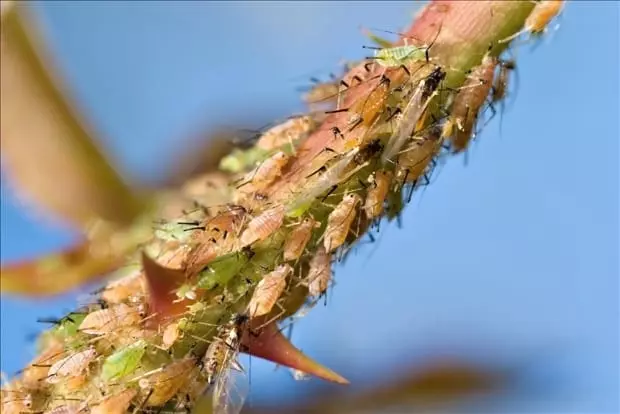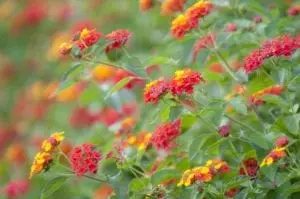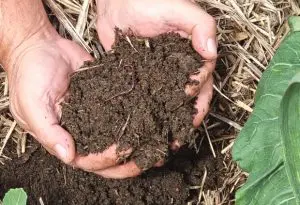Pest Collection – Rose Aphid
Common Name: Rose Aphid
Scientific Name: Macrosiphum rosae
Order: Hemiptera
Host plant where found: Rose (Rosa spp.)
Host range or situation where pest is usually found: Roses

Rose Aphids gathering on stem (image above)
Damaging stage (s): Adults and nymphs feed by piecing plant tissue and sucking sap.
Direct feeding damage: Leaves – Death of leaves, distortion of leaves. Flowers and buds – Distortion of flowers and buds. General stunted growth.
Indirect damage: Produce honeydew which encourage the growth of sooty mould and attract ants which reduce natural enemies. Honeydew, sooty moulds and aphid skins disfigure plants. Aphids can transmit virus disease in other species, but not in roses. Unsightly, white outgrown skins.
Method of feeding: Adults and nymphs are plant feeders and feed by piercing and sucking plant tissue.
Life cycle: Gradual metamorphosis – Eggs, several nymphal stages and adults
Spread: By winged forms flying, assisted by wind, from plant to plant. Movement of infested plants, cuttings etc.
Conditions favouring: Humid conditions during spring and autumn. New growth on roses, weeds and shady areas.
Distinguishing features for identification: Soft, globular body. Central part of abdomen enlarged. Variable in colour. Cornicles present towards end of abdomen. Winged or wingless.
Control options available for this situation: Beneficial present in this situation in the form of Ladybirds, so the only treatment would be to observe and let the aphid’s natural enemy, (Ladybirds) do its job. If no good insects are observed then low toxic oil based sprays are effective.
Identification reference (including page no): Plant protection 3 page j4-5; Plant protection p100, 141-156
The above information was kindly donated by Werner (Horticulturalist)












